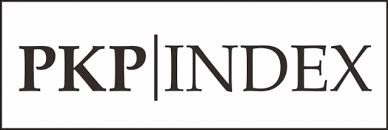Using ESA (Engage, Study, Activate) Method for Improving Students’ Speaking Ability at Junior High School
 ), Ratmanida Ratmanida(2),
), Ratmanida Ratmanida(2), (1) Universitas Negeri Padang
(2) Universitas Negeri Padang
 Corresponding Author
Corresponding Author
Copyright (c) 2019 Journal of English Language Teaching
DOI : https://doi.org/10.24036/jelt.v8i1.103349
Full Text:
 Language : en
Language : en
Abstract
Abstract
This paper aims to explain how to improve students’ ability in speaking at Junior High School by using ESA (Engage, Study, Activate) method. Speaking is one of the language skills that should be mastered by students in learning English, especially for Junior High School students. In learning speaking, the students should be able to have a good ability in speaking. They have to participate actively and create a life communication in speaking class. However, students have some problems in learning speaking. The students are not confident to share their idea and afraid of making mistakes in learning speaking. Furthermore, they keep using their own language (mother tongue). The students have low motivation because the teacher still uses conventional method in teaching speaking. Considering the problems, an appropriate method is needed to help students improve their speaking ability as well as to overcome their problems and weakness. The writer introduces ESA (Engage, Study, Activate) method. In this method, firstly the teacher gets the class interested and engaged, then they study something, and then they try to activate it by putting it into production.
Keywords: Teaching Speaking, ESA Method, Junior High School
Keywords
References
Harmer, J. (1998). How to Teach English. England: Longman
Imane, K. K. (2016). Enhancing EFL Learners’ Speaking Skill Through Effective Communicative Activities and Strategies The Case of First Year EFL students. Retrieved on August 2nd, 2018 from: https://www.google.com/url?sa=t&rct=j&q=&esrc=s&source=web&cd=1&cad=rja&uact=8&ved=2ahUKEwjElqbc3qDgAhWMtI8KHYrVADMQFjAAegQIBRAC&url=http%3A%2F%2Fdspace.univ-tlemcen.dz%2Fbitstream%2F112%2F8910%2F1%2Fkaddour-khaoula.pdf&usg=AOvVaw0rxpoZ6F8OLQaTwqQRQAeA
Park, C. (2003). Engaging Students in the Learning Process: The Learning Journal. Journal of Geography in Higher Education, 27 (2), July 2003, pp. 183–199
Pratiwi, N. A. (2014). “Improving The Speaking Skills Through The Use Of Cooperative Language Learning For The Seventh Grade Students Of Smpn 4 Yogyakarta In The Academic Year Of 2013/2014”. Retrived on October 15th, 2018 from https://eprints.uny.ac.id/17461/
Purnawati. (2017). “Running Dictation to Activate Students In Speaking Class”. Journal of English Teaching and Research, 2 (2), October 2017.
Richards, J.C. 2008. Developing Classroom Speaking Activities: From Theory to Practice. Available on: www.prezi.com. Accessed on April 7th, 2018.
Robertson, C., and Acklam, R. (2000). Action Plan for Teachers: A Guide to Teaching English. UK: British Broadcasting Corporation. 2000). Action Plan for Teachers: A Guide to Teaching English. UK: British Broadcasting Corporation.
Ur, P. (1991). A Course in Language Teaching Practice and Theory. Cambridge: Cambridge University Press.
Wallace, T., Stariha, W.E., & Walberg, H.J. (2004). Teaching Speaking, Listening and Writing. International Academy of Education Educational Practices Series, H.J. Walberg (Ed). Geneva, Switzerland: UNESCO.
 Article Metrics
Article Metrics
 Abstract Views : 20363 times
Abstract Views : 20363 times
 PDF Downloaded : 2899 times
PDF Downloaded : 2899 times
Refbacks
- There are currently no refbacks.
Copyright (c) 2019 Journal of English Language Teaching

This work is licensed under a Creative Commons Attribution-NonCommercial 4.0 International License.
















